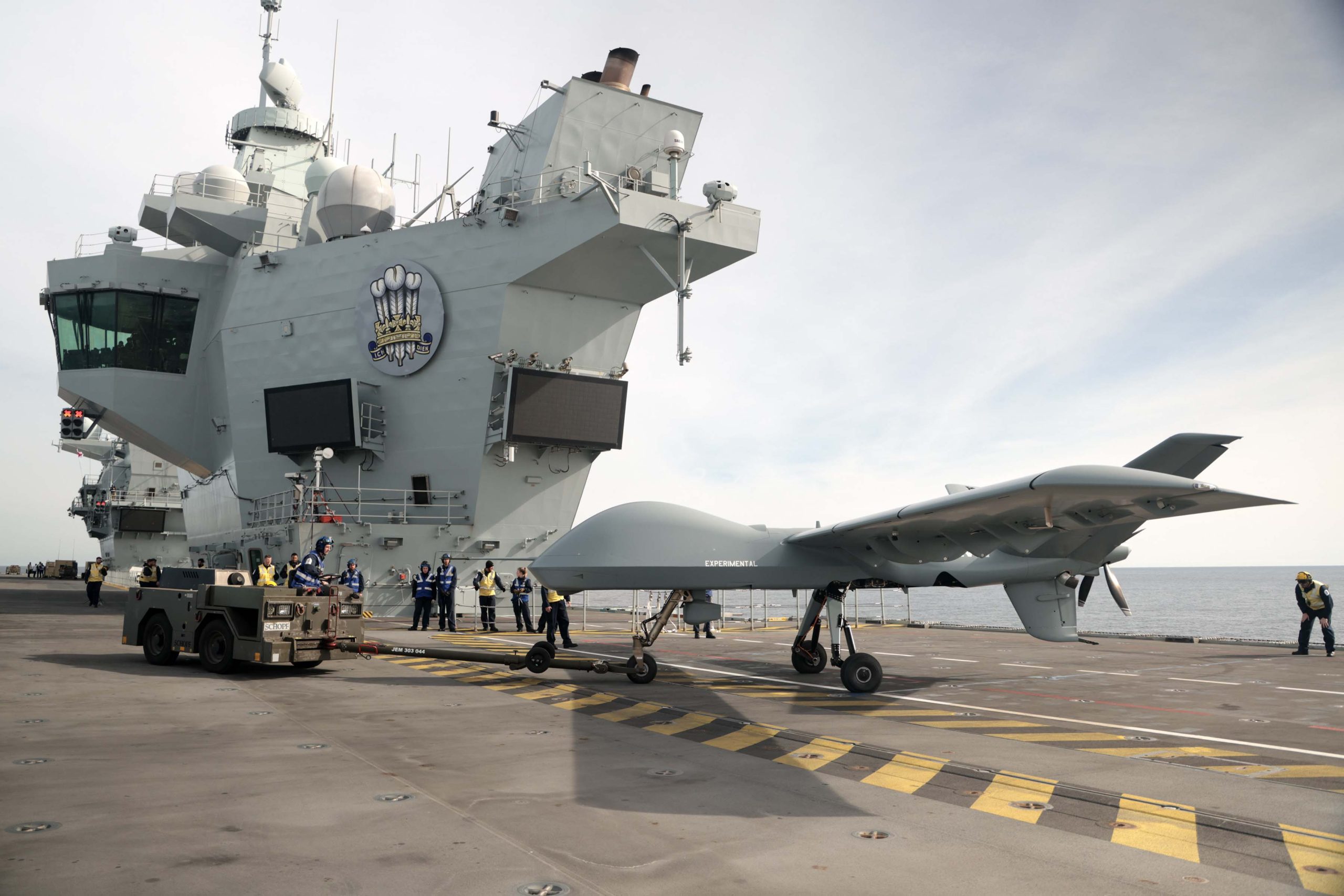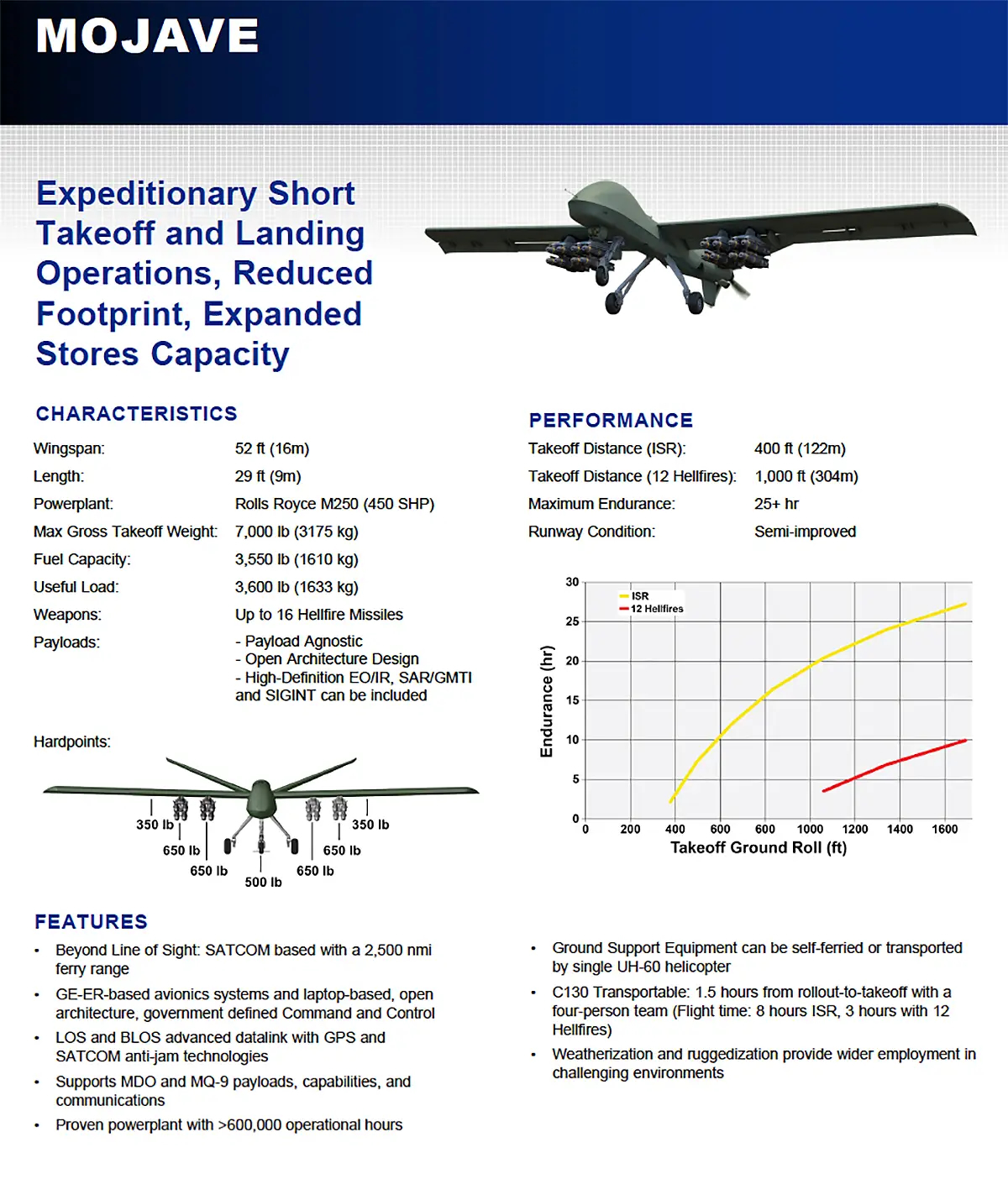
A new American unmanned aerial vehicle (UAV) landed and took off for the first time from an aircraft carrier during HMS Prince of Wales’ (R09) trials off the East Coast.
The Royal Navy’s newest Queen Elizabeth–class aircraft carrier tested the General Atomics’ Mojave short take-off and landing (STOL) demonstrator. While Prince of Wales received a similar drone earlier in its deployment – also a first – the smaller British-made drone was used for a logistics test.
“The success of this trial heralds a new dawn in how we conduct maritime aviation and is another exciting step in the evolution of the Royal Navy’s carrier strike group into a mixed crewed and uncrewed fighting force,” said the planner of Mojave’s test, Rear Adm. James Parkin, Royal Navy Director Develop.
Based on the Reaper and Grey Eagle of the Predator series of unmanned aerial systems, the Mojave can land on a short runway in austere environments such as aircraft carriers without arresting gear and semi-improved landing fields. The Mojave, with a wingspan also can carry more than double the payload of its predecessors, allowing the UAV to deploy a variety of sensors and payloads. General Atomics has described the Mojave as having “double the firepower,” highlighting its ability to carry 16 Hellfire missiles.

The Mojave’s test was one of the many trials planned for Prince of Wales’ autumn deployment, which has seen its flight deck host a plethora of U.S. Marine Corps and Coast Guard aircraft, such as the F-35B Lightning II, MV-22 Osprey, UH-1Y Venom, CH-53E Super Stallion, AH-1Z Viper and MH-65E Dolphin, since the U.K. carrier’s arrival to the U.S. East Coast in September. However, Martin Russell, commander of Prince of Wales’ air group and flight deck operations, pointed to the Mojave’s trial as “one of the highlights” among the various aviation tests.
“My team and I are excited and proud to be the first to launch and land a Mojave from an aircraft carrier,” said Russell.
His sentiment was echoed by Vice Admiral Martin Connell, the Royal Navy’s Second Sea Lord, who stated: “With so many international partners interested in the results of these Mojave trials on board HMS Prince of Wales, I am delighted that we are taking the lead in such exciting and important work to unlock the longer-term potential of the aircraft carrier and push it deep into the 21st Century as a highly-potent striking capability.”
The future is here!!! pic.twitter.com/m8qw1xQN64
— HMS Prince of Wales (@HMSPWLS) November 17, 2023
In a General Atomics press release, CEO Linden Blue said the Royal Navy’s “foresight in embracing this unprecedented capability for its carriers.” The company also highlighted Britain’s interest in procuring a similar STOL unmanned system.
A Japanese delegation has been observing Prince of Wales’ aviation trials, specifically its F-35B tests, in preparation for next year’s deployment of the flattop JS Izumo to the East Coast, where it will carry out its own aviation trials for the F-35 and other aircraft.
Following further tests and experimentation with the Marine Corps, Prince of Wales is slated to return to the U.K. in December.
For its part, the U.S. Navy is developing its own fixed-wing unmanned aircraft for aircraft carriers – the MQ-25A Stingray refueling drone. After manufacturing delays, the aircraft is set to reach it initial operating capability in 2026.





